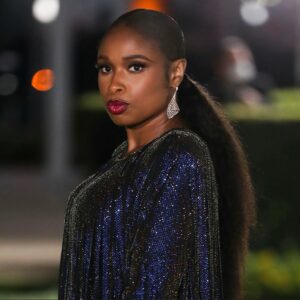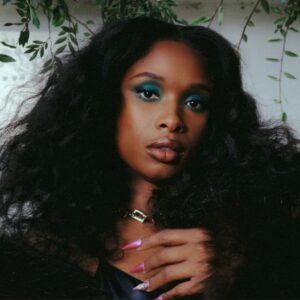Emilia Clarke has become a prominent figure in modern cinema, captivating audiences with her diverse performances and magnetic screen presence. Known widely for her portrayal of Daenerys Targaryen in HBO’s “Game of Thrones,” Clarke has since carved a significant niche in the film industry. Her career trajectory not only reflects her exceptional talent but also signifies her influence on various cinematic trends and industry standards. This article delves into Emilia Clarke’s contributions to contemporary cinema, examining how her roles and choices have impacted casting, genre trends, female representation, and the industry’s embrace of new talent.
Rise to Prominence
Emilia Clarke’s ascent to stardom began with a role that would become iconic: Daenerys Targaryen in “Game of Thrones.” Clarke’s portrayal of Daenerys was a masterclass in character evolution. She transformed from a timid and exiled princess into a commanding and influential leader with a significant impact on the show’s complex narrative. This role not only garnered her critical acclaim but also solidified her position as a leading actress in television and film. Clarke’s ability to convey vulnerability, strength, and depth made Daenerys a character who resonated deeply with audiences and critics alike.
The success of “Game of Thrones” set the stage for Clarke’s future endeavors, providing her with the platform to showcase her versatility. Her performance earned her numerous accolades, including Emmy nominations, and established her as one of the most recognizable faces in contemporary entertainment. The character’s popularity also contributed to a broader appreciation for Clarke’s range as an actress, paving the way for her entry into various film genres.
Impact on Casting and Representation
Emilia Clarke’s success has been instrumental in challenging traditional casting and representation standards within the industry. Her role as Daenerys Targaryen was not merely about portraying a powerful female character; it was about redefining what such a character could be. Clarke’s portrayal demonstrated that female characters could possess both strength and vulnerability, breaking away from stereotypical depictions of women in media.
This shift has had a ripple effect across the industry, encouraging the creation of more diverse and nuanced female roles. Prior to Clarke’s role in “Game of Thrones,” strong female characters were often depicted in one-dimensional ways, either as overly assertive or solely focused on their relationships with male characters. Clarke’s performance showcased that female characters could be multidimensional, complex, and integral to the story’s progression.
Moreover, Clarke’s success has inspired filmmakers and studios to rethink their approach to casting. The industry has gradually become more receptive to diverse representations, not just in terms of gender but also in race, sexuality, and socioeconomic background. Clarke’s influence extends beyond her specific roles; it has contributed to a broader cultural shift towards inclusivity and depth in character development.
Influence on Genre Trends
Emilia Clarke’s filmography reflects a significant shift in genre trends and showcases her versatility as an actress. While “Game of Thrones” established her as a powerhouse in fantasy drama, Clarke’s subsequent roles have demonstrated her ability to navigate a wide range of genres.
Films like “Me Before You” highlight Clarke’s prowess in romantic drama, where she plays a character whose journey involves personal growth and emotional challenges. Her portrayal in “Me Before You” is a testament to her ability to convey complex emotions and connect with audiences on a profound level. The success of the film, both commercially and critically, underscores Clarke’s ability to anchor a narrative and drive its emotional core.
In contrast, “Last Christmas” presents Clarke in a romantic comedy setting, showcasing her comedic timing and charm. The film, which blends humor with heartfelt moments, reflects Clarke’s range as an actress and her ability to appeal to diverse audiences. Her transition between genres—whether it be fantasy, romance, or comedy—demonstrates a broader trend in modern cinema towards embracing multifaceted storytelling and character exploration.
Clarke’s diverse roles have influenced industry trends by demonstrating that leading actresses can thrive across different genres. This versatility encourages filmmakers to explore varied storytelling approaches and broaden the scope of female characters in cinema. Clarke’s ability to seamlessly transition between genres not only highlights her range but also contributes to a more dynamic and varied cinematic landscape.
Changing the Narrative for Female Leads
Emilia Clarke’s career is emblematic of a larger shift in the portrayal of female leads in cinema. Her roles often defy conventional expectations, presenting female characters who are not only central to the narrative but also complex and autonomous. This change is reflective of a broader movement towards more inclusive and empowering representations of women on screen.
In “Game of Thrones,” Daenerys Targaryen’s journey from an exiled princess to a formidable ruler exemplifies a narrative arc that is both empowering and multifaceted. Clarke’s portrayal challenges the traditional notions of female leadership and agency, presenting a character who is both a visionary and deeply human. This portrayal has influenced how female leads are written and perceived, contributing to a shift towards more authentic and empowering female characters in contemporary cinema.
Clarke’s other roles further reinforce this narrative shift. In “Me Before You,” her character Louisa Clark is depicted as a woman whose personal growth and resilience drive the story. The film highlights her journey and development, emphasizing her independence and strength. Similarly, in “Last Christmas,” Clarke’s character grapples with personal challenges and growth, reinforcing the idea that female characters can be central to narratives of self-discovery and transformation.
This evolving narrative aligns with a broader trend in cinema where female characters are portrayed with greater depth and complexity. The emphasis on character development and individual agency reflects a more inclusive and progressive approach to storytelling, where women are not merely supporting characters but are integral to the plot and its resolution.
Collaboration with Emerging Filmmakers
Emilia Clarke’s willingness to collaborate with emerging filmmakers underscores her commitment to innovative storytelling and fresh perspectives. By taking on projects with new and unconventional scripts, Clarke has played a role in bringing novel ideas and voices to the forefront of cinema.
Her work with emerging filmmakers often involves projects that explore unique narratives or experimental approaches to filmmaking. For instance, Clarke’s involvement in films with independent directors and writers reflects her openness to unconventional storytelling methods. This collaboration not only supports new talent but also enriches the cinematic landscape with diverse and innovative perspectives.
Clarke’s role in these projects often involves stepping out of her comfort zone and embracing roles that challenge traditional norms. Her participation in films with emerging filmmakers contributes to a more dynamic and varied film industry, where new voices and perspectives can thrive alongside established talents. This approach aligns with a broader trend in cinema towards embracing creativity and experimentation, encouraging the exploration of fresh and unconventional narratives.
The Impact of Emilia Clarke’s Advocacy and Public Persona
Beyond her on-screen roles, Emilia Clarke’s advocacy and public persona have also contributed to her influence on modern cinema. Clarke has been vocal about various social issues, including gender equality and mental health awareness. Her advocacy work extends beyond her film career, reflecting her commitment to using her platform for positive change.
Clarke’s public persona is characterized by her authenticity and relatability. Her openness about her personal experiences and challenges has endeared her to fans and established her as a role model. This authenticity resonates with audiences and contributes to her influence on contemporary cinema, where genuine representation and personal connection are increasingly valued.
Furthermore, Clarke’s involvement in philanthropic efforts and support for various causes highlights her dedication to making a positive impact beyond the screen. Her advocacy work aligns with a broader trend in the entertainment industry towards social responsibility and the use of celebrity platforms for meaningful change.
Conclusion
Emilia Clarke’s influence on modern cinema extends far beyond her captivating performances. Her roles have challenged industry standards, reshaped representations of female characters, and influenced genre trends. Clarke’s commitment to diverse storytelling, collaboration with emerging filmmakers, and advocacy work reflect her broader impact on the film industry.
As Clarke continues to evolve as an actress and public figure, her contributions to contemporary cinema will likely continue to shape trends and inspire future generations of filmmakers and performers. Her career serves as a testament to the power of talent, versatility, and authenticity in shaping the cinematic landscape, making her a significant figure in the evolution of modern cinema.





